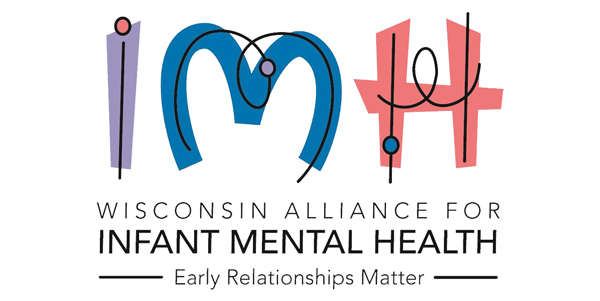
One of our goals at Roots & Wings is to help children have a strong start in life, so that they can reach their full potential.
Why do we focus on a child’s early years? Because the first 1,000 days of life is a period of rapid brain development and an unparalleled opportunity to impact a child’s lifelong health, well-being, and education. This period begins during pregnancy, when prenatal care is critical, and continues through the first few years of life, when nurturing care from parents and caregivers is essential.
For families with limited income, it can be especially difficult to access the resources they need for their children to succeed. Diapers and formula are not cheap. Childcare for infants and toddlers is expensive and often hard to find. The same is true for quality preschool programs. Ironically, childcare providers and preschool teachers themselves struggle with poverty wages. Public support and subsidies are woefully inadequate to support this fractured early childhood ‘system.’
These are the reasons Roots & Wings feels it is critical to invest in early childhood. So far this year we have committed $7 million for early childhood programs in underserved communities. We’re proud to partner with groups like Wisconsin Early Childhood Association, which supports childcare providers through professional development and advocacy. And we were excited to help bring Dolly Parton’s Imagination Library to Dane County, which supports parents by offering free books to all children from birth through five in Dane County.

Our grantmaking for early childhood also funds childcare, preschool, home visiting, parent education and family resources, as well as advocacy to improve our early childhood systems. And because we know how formative the first few years are, more than half of these funds will support children ages 0-3.
Supporting early childhood is one of the best investments we can make. Research shows that funding quality early childhood programs in underserved communities can have a 13 percent return on investment. By strengthening community programs and public systems to support young children and their parents and caregivers, children ages 0-3 in underserved communities can be developmentally on track, ready for school, and able to reach their full potential.

P.S. We invite you to share this newsletter with colleagues who may have an interest in the work Roots & Wings is doing.
Helping infants and young children reach their fullest potential

When most people hear the term ‘early childhood development,’ they think of pre-school, story time, game playing and other supports for toddlers and adolescents. But there is another piece of the early childhood development continuum that’s often overlooked and underprioritized: infant mental health.
Synonymous with healthy social and emotional development, infant mental health is defined as the developing capacity of a child from birth to age five to experience, regulate and express emotions; to form close and secure interpersonal relationships; and to learn and explore their environment, all in the context of family, community, and cultural expectations.
For Lana Shklyar Nenide, executive director of the Wisconsin Alliance for Infant Mental Health (WI-AMH), infant mental health is a field of tremendous importance and opportunity.

Lana Shklyar Nenide, Executive Director, Wisconsin Alliance for Infant Mental Health
“I come from a family of teachers and educators who instilled in me a lifelong belief that we need to do things early,” Lana said. “There’s no such thing as starting too soon, not if we want to raise healthy children with the strong foundation and skills required to become healthy adults.”
WI-AIMH is a statewide non-profit organization founded in 2001 and dedicated to the promotion of social and emotional learning and relationship-based practices. A general operating support grant from Roots & Wings helps Lana and her small team do what they do best: raise public awareness, provide resources for professional development, and advocate for policies that are in the best interest of infants, young children, and their families.
As knowledge of brain development has evolved in recent decades, researchers have identified critical gaps in the systems supporting children and family wellbeing. As Lana explains it, at each subsequent stage of a child’s growth and development, there are more and more systems available to support them. But there are not enough resources for babies during their earliest months – or for those trying to raise them. WI-AIMH is working hard to fill that void in Wisconsin, by being a voice and champion for the needs of those too young to advocate for themselves, and by designing programs to support professionals and parents raising babies and toddlers.
The Alliance recently launched an interactive, educational website called The Power of Connection: Discover the Magic, as a place for families and community members to deepen understanding of the complex and rich emotional worlds of babies and young children and highlight the importance of early relationships.
“Because of our over-reliance on technology, I’m worried that we are missing important opportunities to truly connect with our babies,” Lana explains. “If our eyes are glued to screens, we might miss their cues and communication attempts. I worry that our babies will not know how to make eye contact”
“So I began wondering how we might help parents to understand that first one thousand days is magical time,” she says. “We wanted to create a physical space, an exhibit that could be a rich and nuanced experience. But then COVID happened, and we had to quickly pivot. So, instead, we designed a robust web-based experience where parents can educate themselves to promote awareness of the rich emotional world. We want to emphasize that all feelings are okay. We don’t have to have happy kids all the time. We want to help fathers feel accepting if their boys are scared, crying or sad, and we want to support moms who may struggle when their daughters are angry or persistent. The site gives guidance, advice and inspiration through videos, testimonials, tools and more.”
WI-AIMH is one of 33 state-based organizations belonging to the Alliance for Advancement of Infant Mental Health, a global network that supports professionals working with infants, young children and their families. WI-AIMH is unique in offering and facilitating a number of programs and learning opportunities for the early childhood workforce, such as Reflective Supervision Learning Collaborative, Infant Mental Health Endorsement, and annual state-wide Infant and Early Childhood Mental Health conference.
WI-AIMH is also well-known for coordinating The Pyramid Model, a relationship-based framework that supports professionals in making teaching, learning, and policy decisions that lead to positive outcomes for all children, staff, families, and communities. The Pyramid Model is not a curriculum package, but a collection of evidence-based practices carefully chosen by early childhood researchers to support optimal development and prevent challenging behaviors.
For WI-AIMH’s 12-person team, unrestricted funding creates space to do what many government grants don’t allow. “Our staff is incredibly lean, yet we want to do so much programming,” Lana explains. “Roots & Wings’ support allows us the freedom to think more creatively and expansively, which is critical to innovation and growth.”

Meet Jamie Carroll, a program coordinator at Roots & Wings whose work blends project management with compassion and empathy.
Tell us about your role at Roots & Wings, and what brought you to this work?
If program coordination was a color, it would be rainbow because it’s a little bit of everything. As a grants manager, I support the program team in planning and achieving our grantmaking goals, administering grants, helping our partners navigate the application process, and fielding grant and communication related questions. When I am not doing these things, I am gathering facts and figures and turning data into information. As a person compelled to live a purpose-driven life, I couldn’t have imagined a better way to align my skillset and my heart’s work.
Building a new foundation from the ground up is difficult, and there’s not exactly a playbook to tell you how it should be done. What challenges have you faced in helping establish the Foundation’s programs, and what have you learned so far?
I think a challenge that every new organization has to confront is determining its tolerance for rapid change. In the past year, Roots & Wings has changed quite a bit. We have implemented a new grants management system, re-envisioned our grantmaking process, and hired new staff to increase the impact of the foundation. As with anything that is becoming, rhythm runs late to the party and it can demand a great deal of time and energy to pivot and realign. What have I learned? Turn and face the changes. How fortunate we are to be creators.
What is one thing you would like Roots & Wings grantee partners to know?
Each of us at Roots & Wings care deeply about your success. When the occasion arises to tell us about how else we could be helping you as a partner, take advantage of it. This question will appear once a year in your check-in report and it is a great opportunity for us to get to know you better. It also gives us the chance to take stock of needs that may be shared by partners working across different issue areas. Our program officers would love to help you with capacity building, so don’t be shy.
What inspires you or gives you the greatest hope about where Roots & Wings is heading?
This team gives me the greatest hope. Every day, they show up with their “why” in mind and do the best they can to create change and make an impact. The true joy for their work and expertise in their respective fields manifests an intentionality I haven’t quite seen before. The harmony that is here will lead to remarkable things in the years to come.
How do you like to spend your free time?
Motivational speaking is taking up a good deal of my free time these days. Otherwise, I am hiking with my Australian Shepard, Penny, driving down roads I haven’t been down before, or looking for ways to warm up my Pacific Northwest bones.
